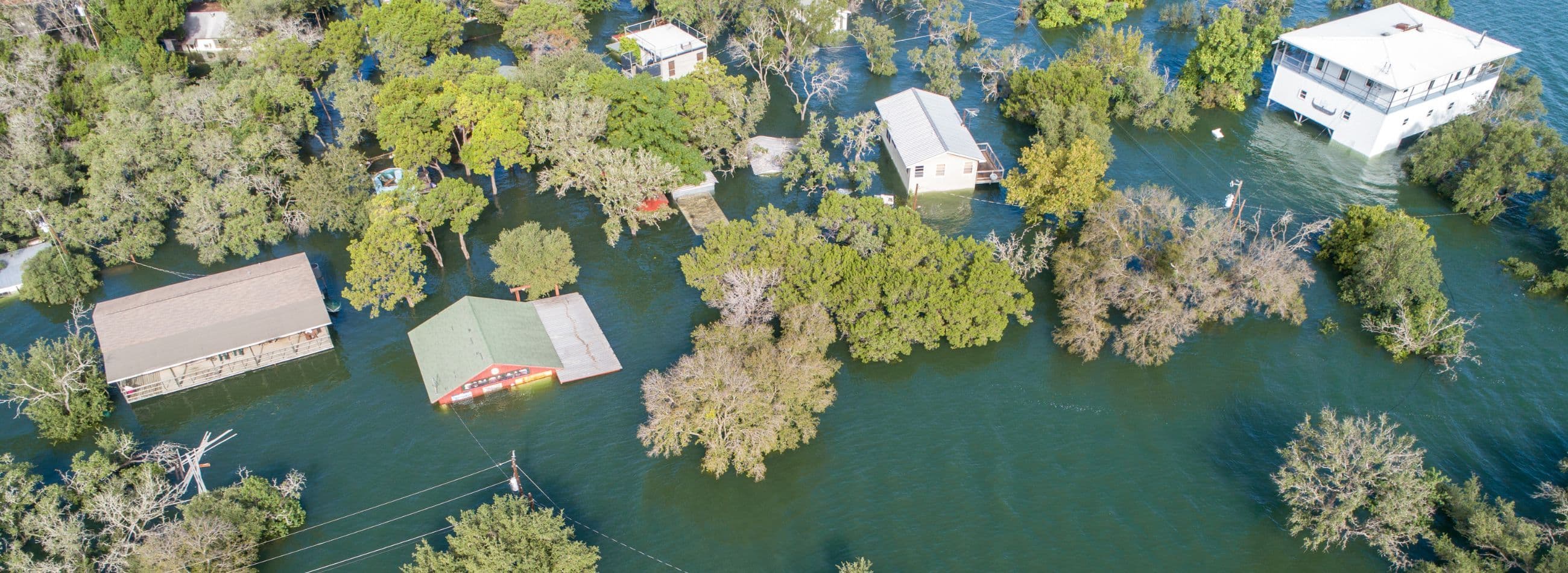Homeowners Shell Out for Flood and Tornado Protection

Flood. Tornado. Wildfire. As a homeowner, none of these are words you want to hear. While home construction in areas prone to natural disasters has advanced in the past several decades to provide better protection, properties in these regions still come with significant risks. However, Americans are continuing to purchase and move to vacation homes in places like Cape Coral, North Port, and Tampa, Florida — likely due to the reasonable cost of living, low property taxes, and proximity to both water and outdoor attractions.
It’s likely that many of these buyers simply aren’t aware of the potential issues that come along with buying a home in these areas.
“…House hunters should be aware that purchasing in a disaster-prone area not only puts them and their home at risk, but their finances as well. Home values in climate-endangered places may fall in the coming years as consumers learn more about the risks to properties in these areas,” says Redfin Senior Economist Sheharyar Bokhari. In fact, nearly all second homes bought within the past two years (94%) are at high heat risk, while more than three quarters (78%) have high storm risk.
According to the results of an August 2022 Redfin survey, current homeowners in these locales are quite aware of and proactive about the threats: 71% of Florida homeowners have spent money to protect homes from climate risk, and more than half of all homeowners (58%) have. More than a third (33%) of all homeowners have also put more than $5,000 into climate-related house projects. The majority (26%) of improvements were to mitigate extreme heat, while 22% invested in steps to help minimize extreme cold, 16% took measures to prevent flooding, and 14% focused on guarding against hurricanes and other tropical storms. Among Florida homeowners, this percentage was nearly triple the national figure, at 40%. Overall, hurricane and major storm coverage actually saw the biggest increase among all homeowners since February 2021, growing from 19% to 29%.
Here are the most common types of disaster-specific coverage and how costs vary across the U.S.
Flood Insurance
Redfin’s survey found that 36% of homeowners have flood insurance, which comprises the highest portion of respondents. However, many of those with flood coverage are still underinsured overall; just 18.5% of homes located in the areas required to evacuate due to Hurricane Ian had coverage through FEMA’s National Flood Insurance program.
While the price of flood insurance is dependent on your location, the national average cost through the National Flood Insurance Program (NFIS) is $771 per year. States with the most expensive flood insurance include Vermont ($1,652/year), Connecticut ($1,504/year), Rhode Island ($1,458/year), Pennsylvania ($1,407/year), and West Virginia ($1,355/year).
Related: “How to Choose the Right Homeowners Insurance”
Tornado Insurance
Standard homeowners insurance usually covers hail and wind damage, but not high winds or tornadoes specifically. If you live in an area that is at high risk, like the states that are part of “Tornado Alley” (generally Texas, Oklahoma, Kansas, Nebraska, Iowa, and parts of Louisiana and Colorado), you’ll want to consider purchasing windstorm insurance as part of your standard policy.
The cost of a windstorm insurance add-on depends on your particular geographic region, and has a deductible that’s a percentage of the total dwelling coverage amount, which usually ranges between one and five percent. However, in coastal areas, it can be up to ten percent. Alternatively, the deductible may be a fixed amount from around $500 to $5,000.
States with the highest premiums by windstorm deductible amount are Oklahoma, Kansas, Nebraska, and Colorado.
Fire Insurance
Most standard homeowners insurance policies have some level of coverage for fire and smoke damage, and the average cost of a policy that includes fire coverage is $1,899 per year. However, individuals in regions that are at higher risk of wildfires, like California, can pay much more than that — especially since many companies won’t provide sufficient coverage for damage in these areas. The percentage of homeowners who purchased wildfire coverage grew from 15% to 24% in the past 18 months, and homeowners insurance costs increased 10% in California alone.
It’s also important to note that there are a few different types of fire insurance: dwelling coverage, which pays to rebuild or replace the actual structure of the home, other structures coverage, which refers to buildings on the property like a shed or garage, and personal property coverage, which pays for one’s belongings inside the home like clothing and appliances. Those in fire-prone areas might want to consider purchasing an additional dwelling fire policy, which costs an average of $651 per year.
If you’re a homeowner who lives in or is planning to move to a region that’s at high risk for natural disasters and could use some extra cash to fund improvements that can help guard against potential damage to your property, a home equity investment could be your answer.
The more you know about your home equity, the better decisions you can make about what to do with it. Do you know how much equity you have in your home? The Home Equity Dashboard makes it easy to find out.
You should know
We do our best to make sure that the information in this post is as accurate as possible as of the date it is published, but things change quickly sometimes. Hometap does not endorse or monitor any linked websites. Individual situations differ, so consult your own finance, tax or legal professional to determine what makes sense for you.
Related Tags:
Emergency repairs, Home repairs, Homeowners insurance, Natural disaster, Rental property, Vacation homeMore in “Market insights”

Survey: Homeowners Look for These Three Things in Home Equity Financing

How Should Homeowners React to a Fed Rate Cut?

